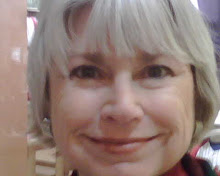We were not prepared for Death Valley. The physical aspects were all in place; gas, water, food, camera, but we had no idea of the images just waiting for us out there.
From the RV park, I looked at the mountains to the west and thought, "we'll have to cross those to see Death Valley." It was true enough, we entered the park from the southeast at Shoshone to climb the Amargosa Range to about 4000 ft., but the mountains are part of the Death Valley experience. At the peak, you begin a descent for about 50 miles until stopping at Badwater, -282 ft. You hear about this depth; the lowest, driest, hottest on the continent. We were surprised by the descent! It was so colorful and diverse! We passed marshlands, and as implied by that, water! We saw scrub vegetation, fields growing rocks, some sand, and mountains that display their mineral content through all the colors of the rainbow.
We talked about the old TV show, Death Valley and their sponsor, Twenty Mule Team Borax. If those pioneers were trying to cross Death Valley in winter, mud would surely have slowed their progress. We learned that the valley was named by one of those pioneers after most of that party lost their lives trying to cross it. No paved roads for those brave souls.
We stopped at Badwater, so named for the high salt content of the spring fed pool. It is surreal to walk out on the salt flats. Many have carved names and phrases in the mineral. As a pioneer, this is the place to cross. We imagined hiking across and up the canyons on the other side. The mountains looked daunting. How would you feel to finally get across and descent to the next valley only to be faced with the Sierra Nevada Range. Only the most determined, brave and healthy would be able to survive. They would have buried me long before, like in Missouri!
When we turned back, to the reality of the car and many other tourists, Russell noticed something white on the eastern mountain face. SEA LEVEL. It is weird to be looking that far up to sea level.
We stopped at Furnace Creek for a picnic and the history of mining in the area. Twenty Mule Team Borax is the most notable and successful. As the demand for borax diminished, they switched gears in the 1920's and built the Furnace Creek Inn for tourism. Visionaries! The company was the driving force behind conservation and the national park designation.
From Furnace Creek we drove east, making 2 stops before leaving the park. Zabriskie Point is just southeast of the Inn and all the activity going on there, but may as well be on another planet. This other-worldly spot tells the volcanic story that created Death Valley. Raw stone in black, yellow, mustard, ochre, brown. Stark does not begin to describe it. And it is breathtakingly beautiful.
Out last stop of the day was Dante's View. The 13-mile side road drives you to a point so that you are standing 5000 feet above Badwater. We took the short hike to capture as much of the view as possible along the highest point in the park. We could clearly see the salt flats where we had walked earlier. From here you might think all that white stuff was snow, but no. In late January, water is visible in pools surrounded by salt, mud, and some greenery. The valley stretches as far as the eye can see north and south. The eastern mountains continue to amaze with their mineral colors. We saw the western mountains beginning to go into shadow.
The west side of the valley is the Panamint Range, which we have not gotten to. At Badwater we were making guesses about the distance across the valley, from 8 to 20 miles. From the map, we weren't far off. I measured about 15 miles.There is only one paved road across the park which is about 70 miles long, but it is on a diagonal, taking you from the eastern edge through Furnace Creek, northwest to Stovepipe and then southwest to Panamint Springs.
The 2 mountain ranges lie on roughly parallel fault lines. The western line is pushing Panamint and Sierra Nevada Mountains higher, while the the eastern line is sinking lower. At some point in the future, Death Valley will be even lower than it is now. We hope to be far away when that earthquake occurs!
Subscribe to:
Post Comments (Atom)


.JPG)
No comments:
Post a Comment